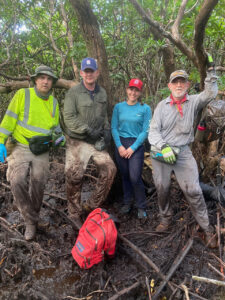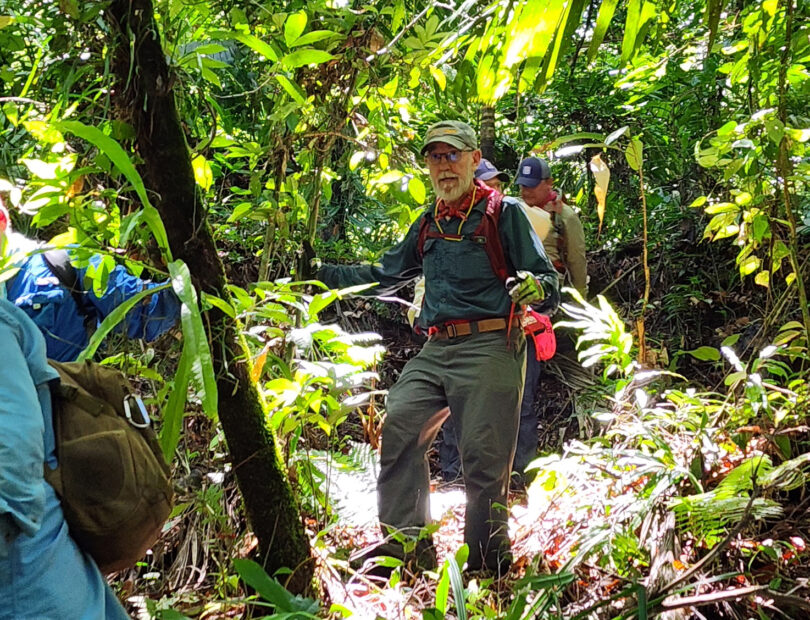Dr. Pat Scannon BSCH ’69 has spent the last three decades serving those classified as missing in action (MIA) since World War II.
As co-founder of Project Recover, he conducts missions around the globe to locate the remains and personal effects of MIAs and return them to the United States in order to bring closure to their families.
“The families never forget, and I’ve almost seen an amplified sense of loss from generation to generation as the years pass,” says Scannon, who also founded a biotech company in the 1980s, utilizing his doctoral and medical degrees. “The results of our efforts, and the ability to finally have this individual’s remains returned home, are profound.”
Founded as the BentProp Project, the work started when Scannon came across a wreckage site while scuba diving in the western Pacific Ocean.
We’ve seen families come together, some who have never met each other. We’ve seen communities come together. It’s an outpouring of support that happens, a time to come together, reflect, and remember somebody who now won’t be forgotten.” — Dr. Pat Shannon BSCH ’69, co-founder of Project Recover
“In 1993, I found a wing of a bomber in Palau and nobody knew anything about it,” Scannon says. “And to me, that was an epiphany—when an overpowering emotion causes you to do something you may or may not be prepared for.”
While Scannon was not able to identify individuals associated with that first site, his quest for answers has advanced several other MIA cases. In the last 30 years, Project Recover has conducted missions in 21 countries, locating more than 60 World War II aircraft associated with hundreds of missing pilots and aircrew members. They have repatriated the remains of nearly 20 servicemembers, helping provide families closure after decades of questions.

Project Recover deploys a diverse group of professionals and volunteers on each recovery mission, including divers, archaeologists and historians. (Photo/Courtesy)
From research to recovery, each case includes a team of archaeologists, scuba divers, historians, and volunteers who come together to locate and search wreckage sites.
“We’re creating a record for those missing in action,” Scannon says. “We can tell you where that individual was and tell you what happened to them. We’re closing the history of that event on that day, and I think we’re still evolving to know how, on a larger scale, history might be affected.”
At times, progress can feel slow, but the importance of Project Recover’s mission keeps volunteers and team members moving forward. In January 2023, a U.S. Navy aviation ordinanceman from New Jersey was formally accounted for, providing closure almost 80 years after his crew took off in 1944.
The wreckage of his plane was first located and documented in 2015, and his remains were recovered in 2021. From there, the Defense POW/MIA Accounting Agency was able to confirm his identity and notify family.
And with each reunion, the impact of Project Recover grows.
“We’ve seen families come together, some who have never met each other,” Scannon says. “We’ve seen communities come together. It’s an outpouring of support that happens, a time to come together, reflect, and remember somebody who now won’t be forgotten.”
Scannon served as president of Project Recover until 2018, when U.S. Marine Officer Derek Abbey, who served for 23 years before joining Project Recover’s team in 2004, took over as president and CEO. But Scannon is not slowing down. He continues to go on two to three missions per year, facilitating progress on cases across the globe.
Since 2019, Scannon has also toured the country to share a documentary that highlights Project Recover and its mission. To What Remains was screened at UGA in February 2023.
“We believe anything we can add is important, and the more cases we’re able to contribute to, the better. We just want more MIAs to come home—that’s our real mission,” Scannon says.








